Hinduism
Busting False claims of Beef in Vedas by Hinduphobes
Published
3 years agoon
By
Vedic Tribe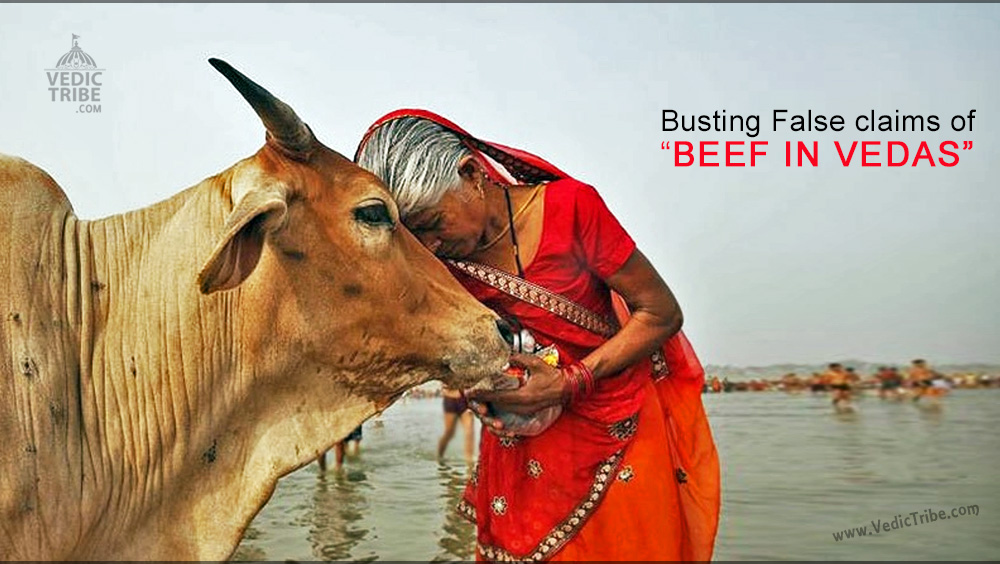
~By Shri Sanjeev Newar
The material presented here is based on a thorough and objective analysis of roots of Vedic words, the context in which they appear, Vedic Vocabulary, Philology, Grammar and other tools critical for correct interpretation of the Vedic mantras.
Thus this research series does not merely rely on blind reproduction of works of Max Muller, Griffith, Wilson, Williams and other indologists on Vedas and Vedic language. While they are more popular in contemporary western academia, we have objective reasons to conclude that their works are far from authoritative. We shall explore this facet in more detail in this research series.
Welcome to this first part of the research series on critical evaluation of Misconceptions surrounding the Vedas – the first books of knowledge on earth.
For centuries aspersions have been cast upon the Vedas; the primary holy scriptures of the Hindus of having unholy contents. If one really started believing in those aspersions, the entire Hindu philosophy, culture, and traditions would reduce to nothing but savagery, barbarism and cannibalism.
The Vedas – the very roots of Hinduism, rather the first source of knowledge on earth – are meant for guiding the actions of human being in order to lead a blissful life.
This slanderous campaign has been unleashed by different vested interests to embarrass Hindus around the world citing specific references from the Vedas.
This also comes handy in convincing poor and illiterate Indians to give up their faith on the grounds that their fundamental holy books – the Vedas – contain all the inhuman elements like denigration of women, meat-eating, polygamy, casteism and above all – beef eating.
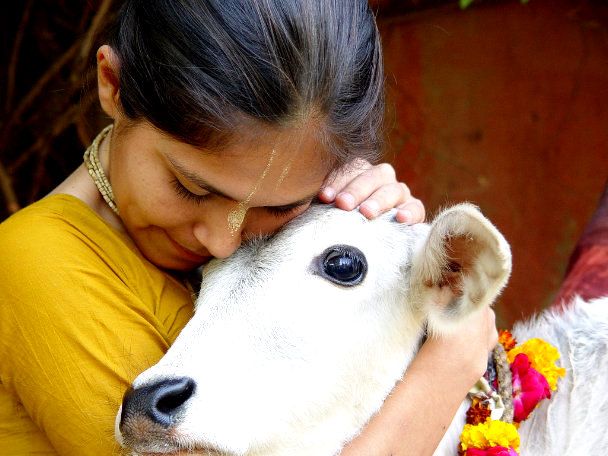
The Vedas are also accused of animal sacrifice in sacrificial ceremonies popularly known as the YAJNA. Interestingly a section of home-bred intellectuals claiming to have deep study of ancient India has also come up, who cite references from works of western indologists to prove such unholy content in the Vedas.
Saying that the Vedas permit beef-eating and cow-slaughter amounts to striking a lethal blow to a Hindu’s soul. Respect for cow forms a core tenet of Hinduism. Once you are able to convince him of flaws in the foundation of this core tenet and make him feel guilty, he becomes an easy prey for the predator faiths. There are millions of ill-informed Hindus who are not empowered to counter argue and hence quietly surrender.
The vested interests that malign the Vedas are not confined to foreign and home-bred indologists alone. A certain class among Hindus exploited the rest of the population including the socially and economically weaker sections by forcing them to believe and follow what they said in the name of Vedas or else face the wrath.
All the slanders heaped upon the Vedas can be attributed mainly to the interpretations of commentaries written by Mahidhar, Uvat and Saayan in the medieval times; and to what Vam-margis or the Tantra cult propagated in their books in the name of the Vedas.
In due course the falsehood spread far and wide and they became even more deep rooted when western scholars with their half baked knowledge of Sanskrit transliterated these interpretations of commentaries of Sayan and Mahidhar, in the name of translating the Vedas.
However, they lacked the pre-requisite understanding of Shiksha (Phonetics), Vyakarana (Grammar), Nirukta (Philology), Nighantu (Vocabulary), Chhanda (Prosody), Jyotish (Astronomy), Kalpa and so on that are critical for correct interpretation of the Vedas.
The purpose behind Agniveer movement is to objectively evaluate all such misconceptions about the Vedas – the foundation of human knowledge and establish their piety, sanctity, great ideals and philosophy that cater not only to Hindus but to every human being without bars, bias or discrimination of any kind.
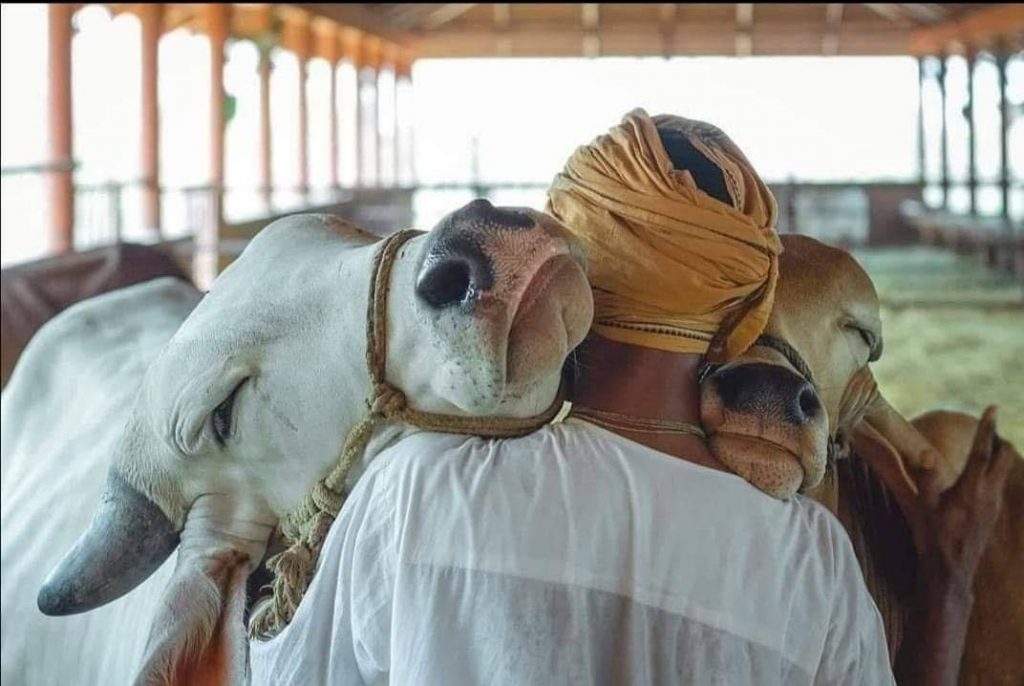
Section 1: No Violence Against Animals
Yasmintsarvaani bhutaanyaatmaivaabhuudvijaanatah
Tatra ko mohah kah shokah ekatvamanupasyatah
Yajurveda 40.7
“Those who see all beings as souls do not feel infatuation or anguish at their sight, for they experience oneness with them”.
How could people who believed in the doctrines of indestructibility, transmigration dare to kill living animals in yajnas? They might be seeing the souls of their own near and dear ones of bygone days residing in those living beings.
Anumantaa vishasitaa nihantaa krayavikrayee
Samskartaa chopahartaa cha khadakashcheti ghaatakaah
Manusmrithi 5.51
Those who permit slaying of animals; those who bring animals for slaughter; those who slaughter; those who sell meat; those who purchase meat; those who prepare dish out of it; those who serve that meat and those who eat are all murderers.
Breehimattam yavamattamatho maashamatho tilam
Esha vaam bhaago nihito ratnadheyaaya dantau maa hinsishtam pitaram maataram cha
Atharvaveda 6.140.2
O teeth! You eat rice, you eat barley, you gram and you eat sesame. These cereals are specifically meant for you. Do not kill those who are capable of being fathers and mothers.
Ya aamam maansamadanti paurusheyam cha ye kravih
Garbhaan khaadanti keshavaastaanito naashayaamasi
Atharvaveda 8.6.23
We ought to destroy those who eat cooked as well as uncooked meat, meat involving destruction of males and females, foetus and eggs.
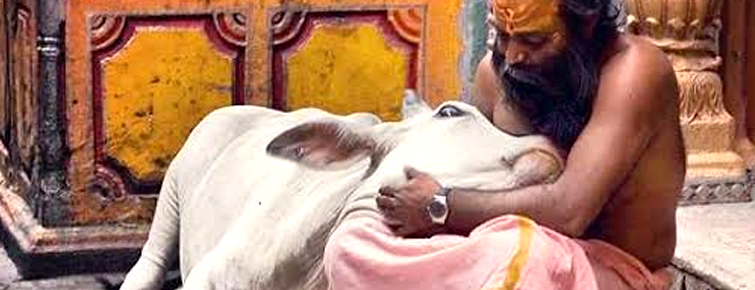
Anago hatya vai bheema kritye
Maa no gaamashvam purusham vadheeh
Atharvaveda 10.1.29
It is definitely a great sin to kill innocents. Do not kill our cows, horses and people.
How could there be justification of cow and other animals being killed when killing is so clearly prohibited in the Vedas?
Aghnyaa yajamaanasya pashoonpahi
Yajurveda 1.1
“O human! animals are Aghnya – not to be killed. Protect the animals”
Pashunstraayethaam
Yajurveda 6.11
Protect the animals.
Dwipaadava Chatushpaatpaahi
Yajurveda 14.8
Protect the bipeds and quadrupeds!
Kravy da –kravya[ meat obtained from slaughter] + Ada [ the eater]—the meat eater.
Pisacha — pisita [meat] +asa [eater]—the meat eater.
Asutrpa — Asu [breath of life] + trpa [one who satisfies himself on]—one who takes others life for his meals.
Garba da and Anda da – the foetus and egg eaters.
Mans da – the meat eaters
Meat eaters have always been looked down in Vedic literature. They have been known as Rakshasas, Pisacha and so on….All these words are synonyms of demons or devils that have been out-cast from the civilized human society.
Urjam no dhehi dwipade chatushpade
Yajurveda 11.83
“May all bipeds and quadrupeds gain strength and nourishment”
This mantra is recited by Hindus before every meal. How could the same philosophy which prays for well-being of every soul in every moment of life, approve of killing animals?

Section 2: No Violence in Yajna
Yajna never meant animal sacrifice in the sense popularly understood. Yajna in the Vedas meant a noble deed or the highest purifying action.
Adhvara iti Yajnanaama – Dhvaratihimsaakarmaa tatpratishedhah
Nirukta 2.7
According to Yaaska Acharya, one of the synonyms of Yajna in Nirukta or the Vedic philology is Adhvara.
Dhvara means an act with himsa or violence. And therefore a-dhvara means an act involving no himsa or no violence. There are a large number of such usage of Adhvara in the Vedas.
In the post-Mahabharata period, misinterpretation of the Vedas and interpolations in other scriptures took place at various points intime. Acharya Shankar reestablished the Vedic values to an extent.
In the more recent times, Swami Dayanand Saraswati – known as the grandfather of modern India – interpreted the Vedas as per thecorrect rules of the language and authentic evidences. His literature, which includes commentary on the Vedas, Satyarth Prakash loosely translated as Light of Truth, An Introduction to the Vedas and other texts led to widespread social reformation based on Vedic philosophy and dispelling of myths surrounding the Vedas.
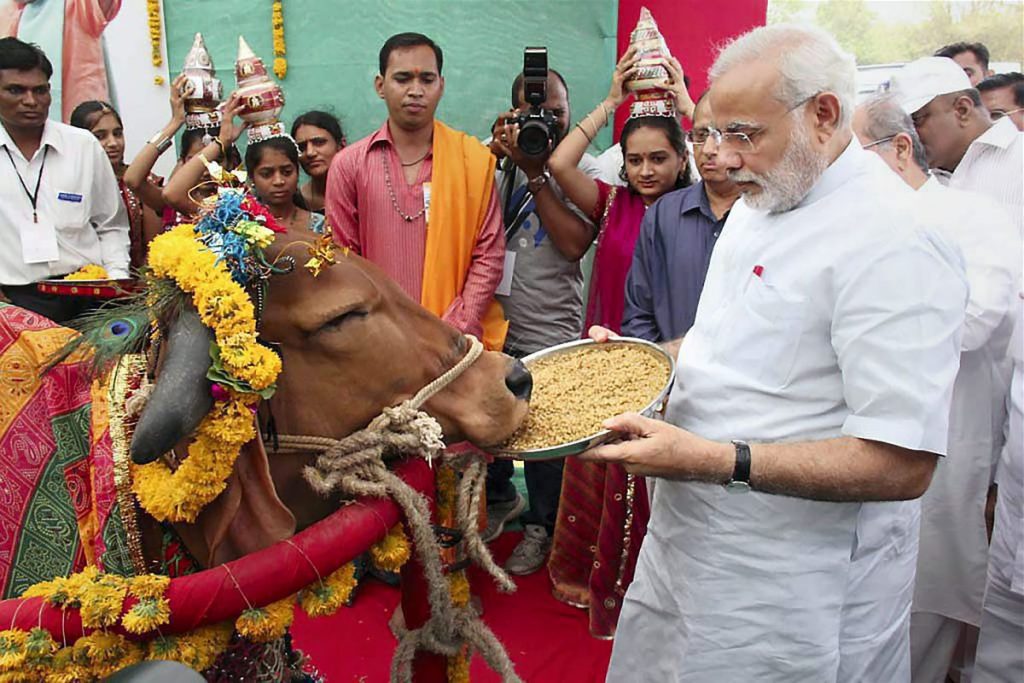
Let us discover what the Vedas have to say on Yajna.
Agne yam yagnamadhvaram vishwatah pari bhuurasi
Sa id deveshu gacchati
Rigveda 1.1.4
O lord of effulgence! The non-violent Yajna, you prescribe from all sides, is beneficial for all, touches divine proportions and is accepted by noble souls.
The Rigveda describes Yajna as Adhvara or non violent throughout. Same is the case with all the other Vedas. How can it be then concluded that the Vedas permit violence or slaughter of animals?
The biggest accusation of cattle and cow slaughter comes in the context of the Yajnas that derived their names from different cattle like the Ashwamedh Yajna, the Gomedha Yajna and the Nar-medh Yajna. Even by the wildest stretch of the imagination the word Medha would not mean slaughter in this context.
It’s interesting to note what Yajurveda says about a horse
Imam ma himsirekashafam pashum kanikradam vaajinam vaajineshu
Yajurveda 13.48
Do not slaughter this one hoofed animal that neighs and who goes with a speed faster than most of the animals. Aswamedha does not mean horse sacrifice at Yajna. Instead the Yajurveda clearly mentions that a horse ought not to be slaughtered.
In Shathapatha, Ashwa is a word for the nation or empire . The word medha does not mean slaughter. It denotes an act done in accordance to the intellect Alternatively it could mean consolidation, as evident from the root meaning of medha i.e. medhru san-ga-me
Raashtram vaa ashwamedhah
Annam hi gau
Agnirvaa ashwah
Aajyam medhah
(Shatpath 13.1.6.3)
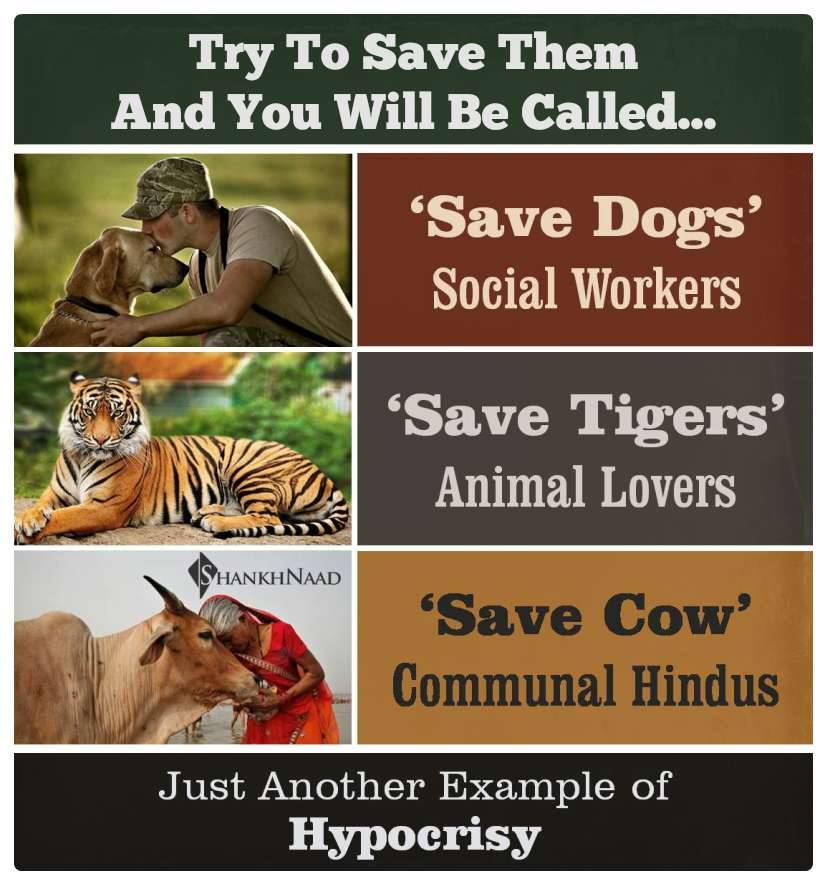
Swami Dayananda Saraswati Wrote in His Light of Truth:
A Yajna dedicated to the glory, wellbeing and prosperity of the Rashtra the nation or empire is known as the Ashwamedh yajna.
“To keep the food pure or to keep the senses under control, or to make the food pure or to make a good use of the rays of Sun or keep the earth free from impurities[clean] is called Gomedha Yajna”.
“The word Gau also means the Earth and the yajna dedicated to keep the Earth the environment clean is called Gomedha Yajna”
“The cremation of the body of a dead person in accordance with the principles laid down in the Vedas is called Naramedha Yajna”.
Section 3: No Beef in Vedas
Not only the Vedas are against animal slaughter but also vehemently oppose and prohibit cow slaughter.Yajurveda forbids killing of cows, for they provide energizing food for human beings
Ghrtam duhaanaamaditim janaayaagne maa himsiheeh
Yajurveda 13.49
Do not kill cows and bulls who always deserve to be protected.
Aare gohaa nrhaa vadho vo astu
Rigveda 7.56.17
In Rigveda cow slaughter has been declared a heinous crime equivalent to human murder and it has been said that those who commits this crime should be punished.
Sooyavasaad bhagavatee hi bhooyaa atho vayam bhagvantah syaama
Addhi trnamaghnye vishwadaaneem piba shuddhamudakamaacharantee
Rigveda 1.164.40 or Atharv 7.73.11 or Atharv 9.10.20
The Aghnya cows – which are not to be killed under any circumstances– may keep themselves healthy by use of pure water and green grass, so that we may be endowed with virtues, knowledge and wealth.
The Vedic Lexicon, Nighantu, gives amongst other synonyms of Gau[ or cow] the words Aghnya. Ahi, and Aditi. Yaska the commentator on Nighantu, defines these as-
Aghnya the one that ought not to be killed
Ahi the one that must not be slaughtered.
Aditi the one that ought not to be cut into pieces.
These three names of cow signify that the animal ought not to be put to tortures. These words appear frequently throughout the Vedas in context of the cow.
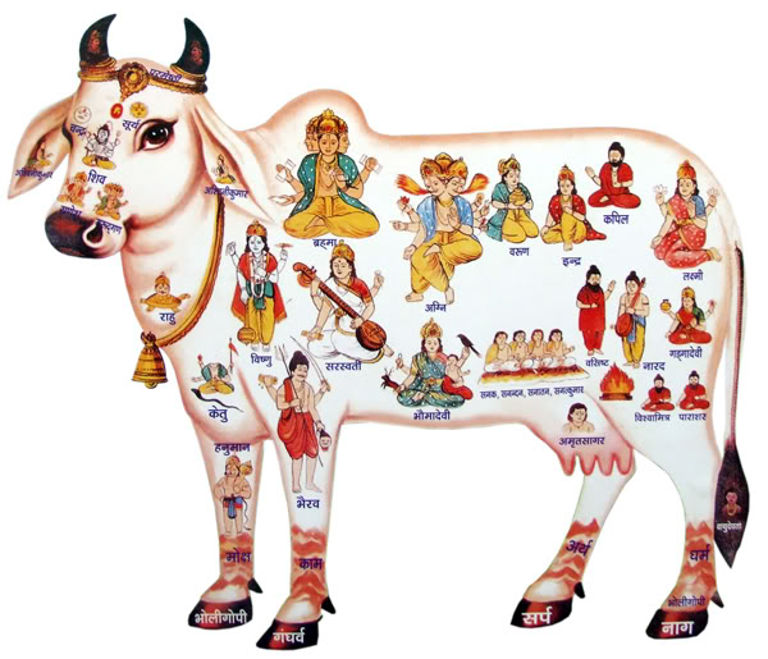
Aghnyeyam saa vardhataam mahate soubhagaaya
Rigveda 1.164.27
Cow – The aghnya – brings us health and prosperity
Suprapaanam Bhavatvaghnyaayaah
Rigveda 5.83.8
There should be excellent facility for pure water for Aghnya Cow
Yah paurusheyena kravishaa samankte yo ashwena pashunaa yaatudhaanah
Yo aghnyaayaa bharati ksheeramagne teshaam sheershaani harasaapi vrishcha
Rigveda 10.87.16
Those who feed on human, horse or animal flesh and those who destroy milk-giving Aghnya cows should be severely punished.
Vimucchyadhvamaghnyaa devayaanaa aganma
Yajurveda 12.73
The Aghnya cows and bulls bring you prosperity
Maa gaamanaagaamaditim vadhishta
Rigveda 8.101.15
Do not kill the cow. Cow is innocent and aditi – that ought not to be cut into pieces
Antakaaya goghaatam
Yajurveda 30.18
Destroy those who kill cows
Yadi no gaam hansi yadyashwam yadi poorusham
Tam tvaa seesena vidhyaamo yatha no so aveeraha
Atharvaveda 1.16.4
If someone destroys our cows, horses or people, kill him with a bullet of lead.
Vatsam jaatamivaaghnyaa
Atharvaveda 3.30.1
Love each other as the Aghnya – non-killable cow – loves its calf
Dhenu sadanam rayeenaam
Atharvaveda 11.1.34
Cow is fountainhead of all bounties
The entire 28th Sukta or Hymn of 6th Mandal of Rigveda sings the glory of cow.
Aa gaavo agnamannuta bhadramakrantseedantu
Bhooyobhooyo rayimidasya vardhayannabhinne
Na taa nashanti na dabhaati taskaro naasaamamitro vyathiraa dadharshati
Na taa arvaa renukakaato ashnute na samskritramupa yanti taa abhi
Gaavo bhago gaava indro me achhaan
Yooyam gaavo medayathaa
Maa vah stena eeshata maaghanshasah
Everyone should ensure that cows are free from miseries and kept healthy.
God blesses those who take care of cows.
Even the enemies should not use any weapon on cows
No one should slaughter the cow
Cow brings prosperity and strength
If cows keep healthy and happy, men and women shall also keep disease free and prosperous
May the cow eat green grass and pure water. May they not be killed and bring prosperity to us. What more proofs does one need to understand the high esteem in whichnot only the cow but each living being is held in the Vedas.
The learned audience can decide for themselves from these evidences that the Vedas are completely against any inhuman practice… to top it all the Beef and Cow slaughter.
You may like
Hinduism
Significance of Bilva Leaf – Why is it dear to Lord shiva?
Published
3 years agoon
March 12, 2021By
Vedic Tribe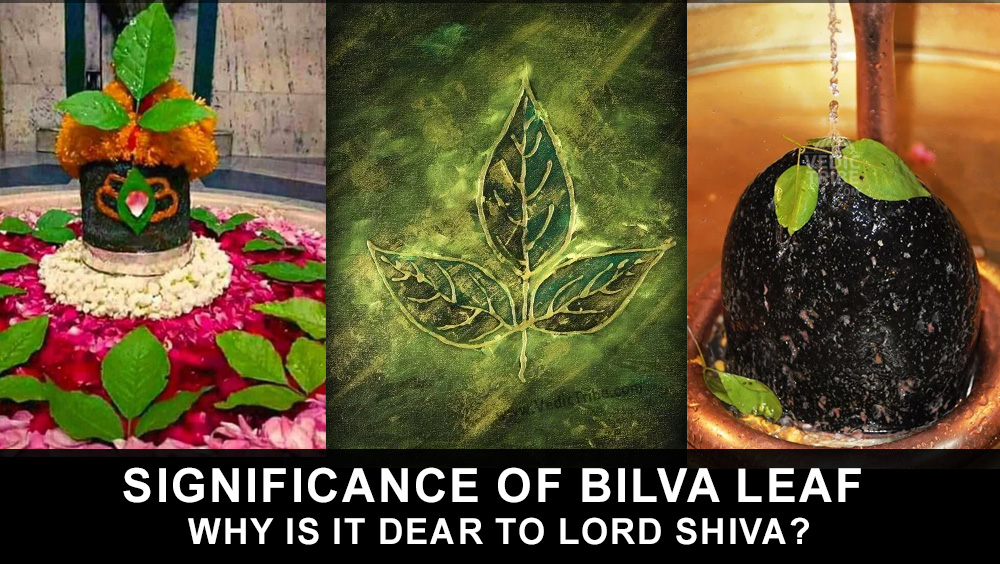
– Arun Gopinath
Hindus believe that the knowledge of medicinal plants is older than history itself, that it was gifted hundreds of thousands of years ago to the Vedic by Lord Brahma, the divine creator.
Thus when the Rishis of the Ayurveda sought to heal human suffering, they were able to draw on knowledge that had already been evolving for millennia in the forests of India. One tree about which they had a very deep knowledge was the Bilva tree. The science of Ayurveda values the Bilva highly for the medicinal properties contained in its root, fruit and leaves. According to Swami Sivananda, it is a healing tree which cures all diseases caused by vata (wind) and gives strength to the body.
More commonly known as the Bel Tree in India as well as other warm countries, this is a sacred tree having sacrificial importance and the first thing we can notice about the leaves is that they are generally trifoliate. This trifoliate leaf is symbolic of Trikaal or the Hindu Trinity of Devas known as Brahma Vishnu and Mahesh. The other names of this tree are Wood apple and its botanical name is Aegle marmilos.
The Bilva leaf or Patra as it is known, represents the Trinetra or three eyes of Lord Shiva, the main aspects like Trishakti (volition, action and knowledge), the three Shiva lingams and the three syllables of AUM or Omkar and are most favorite of Lord Shiva.
There are also five formed Bilva leaves known as PanchaDal patra found on some Bilva trees and these too are held as sacred for the worship of Lord Shiva. Bilva tree grows to a height of 8 meters with thorns. The leaves are alternate, ovate, trifoliate and aromatic. The tender leaves and shoots are consumed as salad greens. The flowers bloom in the month of May and will have a sweet fragrance.
It appears from all the Hindu texts and scriptures that the Bilva tree itself has been held very sacred and auspicious and is considered very holy since time immemorial thats its significance is mentioned in Mahapuranas in various forms of mantras. The Shiva Purana mentions a particular narration of how the usage of Bilva due to its scientific as well as medicinal properties is of great adavantage to Mankind.
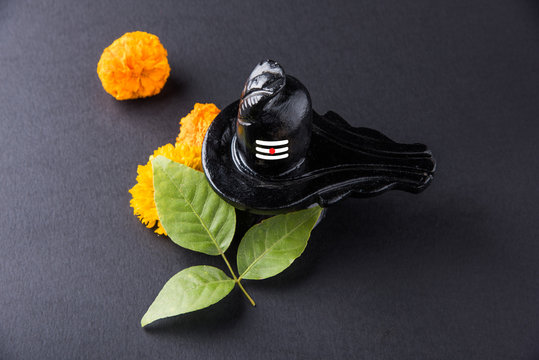
The 22nd Chapter of maha ShivaPurana narrates ” The trifoliate Bilva Patra is so sacred to Lord Shiva & is therefore a symbol of the Lord. Adored by all the Gods, its importance is difficult for anyone to comprehend. The sacred tree can only be known to a limited extent. Sacred sites of this Earth can only find their place at the root of this auspicious tree. Those who meditate upon Lord Mahadeva in His form of linga at the root of Bilva obtain Moksha & become purified souls by attaining Shiva. Such are the marvels of this sacred Bilva.”
The famous Shri Bilvashtakam (v. 6–7) Mentions :
Lakshmyaascha stana utpannam Mahaadeva sadaa priyam,
Bilva vriksham prayachchhaami eka bilvam Shivaarpanam.
Darshanam bilva vrikshasya sparshanam paapanaashanam,
Aghorapaapasamhaaram eka bilvam shivarpanam.
Translation :
Born from the heart of Goddess Lakshmi, the Bilva tree is ever dear to Mahadeva. So I ask this tree to offer one Bilva leaf to Lord Shiva. Even if (one) has darshan ( view) of the Bilva tree, and touches it, surely frees one from sin. The most terrible karma is destroyed when a Bilva leaf is offered to Lord Shiva.
It is also believed that Lakshmi, the Goddess of Wealth, also lives in the bel tree. Those who perform the puja of Shiva and Parvati devoutly, using the leaves, will be endowed with spiritual powers.
Scientific Advantages
According to Hindu scriptures, the Bilva is Triguna which is connected to the three Gunas or components of natural characteristics of the tree. In Hindu philosophy, the three Gunas are Sattva, Rajas & Tamas with Sattva being the pure most while Tamas normally is to do with darkness & ignorance.
The Sattvic component is believed to be more centered within the bilva patra and therefore the high capacity to absorb and emit Sattvic frequencies. This has various effects on the environment as well as on anyone merelt touching the leaf. One of them is the reduction of Rajasic-Tamasic atoms present in the atmosphere & more importantly within the human body.
A Sattvic leaf like bilva patra when brought in proximity of a person suffering from negative energies such as distress and anxiety is believed to medically reduce these energies within the human body. People with negative outlook towards life and their environment normally do not realize they have negative energies building up within their body and are at a risk of subconsciously harpering destructive thoughts also.
Whenever such people come into contact with a Sattvic atmosphere, what they fail to realize is their negative energies try to fight the positivity of a Sattva predominant environment. This struggle can build up at various levels and can vary from the human mind thinking negatively and can result sudden bursts of anger to destruction of things around them.
Medicinal uses
The roots, skin, fruits and the leaves of the Bilva tree are used for medicinal purpose. Bilva has astringent, edema lessening, anti-diarrhea, laxative and appetizer properties hence, can be used to cure both internal and external diseases.
The sacred tree has many medicinal usages and is advantageous in curing many human ailments such as :
- Bleeding gums.
- Bel fruit clears diarrhea, dysentry, phlegm, high blood pressure, morning sickness in pregnancy, stress.
- Asthma can be controlled when a mixture of dry bel leaf powder & honey is consumed daily
- Jaundice can be cured by consuming the extracted juice of the bilva leaves
- Anemia can be cured by drinking the powder of the bel fruit mixed with milk
- Bel fruit keeps the skin rejuvenated when pasted into a face pack; also cures joint aches
Hinduism
Concept of Time and Creation (‘Brahma Srishti’) in Padma Purana
Published
3 years agoon
March 12, 2021By
Vedic Tribe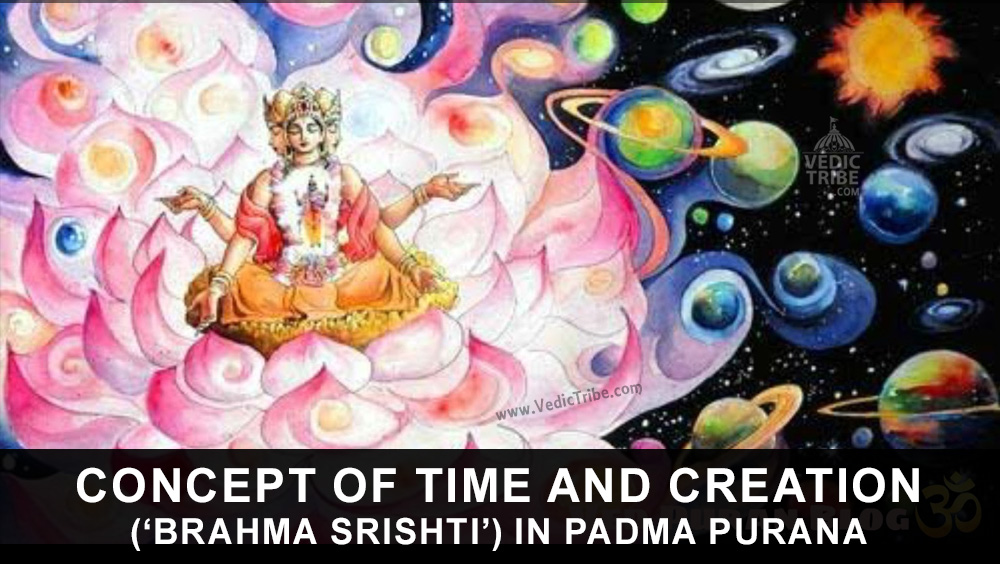
Pulastya Maha Muni affirmed to Bhishma that Brahma was Narayana Himself and that in reality he was Eternal. But in a formal sense it was stated that Brahma was ‘created’ and in that normally recognised manner Brahma had hundred years of age; apparently, the concept of Time would have to have a basis and that was why Brahma’s age was determined notionally as of hundred Brahma Years; in other words, ‘Para’or the first half was over and his present age has entered the ‘Paraartha’, the second half (viz. Fifty first year).This was how, the concept of Time emerged.
Every fifteen ‘Nimeshas’ constitute one ‘Kaashtha’; thirty Kashthas one one ‘Kala’; thirty Kalas make one ‘Muhurtha’; thirty Muhurtas make one day/night, thirty day/nights make on ‘Maasa’; (half Maasa makes one ‘Paksha’), six Maasas make one ‘Ayana’ and two Ayanas-Dakshinayana and Uttarayana- make one ‘Year’. Dakshinayana is a night for Devas and Uttarayana their day. One hundred human years make one day-night of Devas.
Twelve thousand Deva Years make four Yugas viz, Satya Yuga, Treta Yuja, Dwapara Yuga and Kali Yuga and these four Yugas make one Maha Yuga which is Brahma’s one day! Satya Yuga comprises 4800 DevaYears including ‘Sandhya mana’ of 400 years and ‘Sandhyamsha maana of additional 400 years; Treta Yuga comprises 3600 Deva Years including 600 years of ‘Sandhya/ Sandhyamsha mana’each; Dwapara Yuga of 2400 years including 200 years of ‘Sandhya/ Sandhyamsha mana’each and Kali Yuga of 1000 years including 100 years each of Sandhya / Sandhyamsha manas.Deva Years are 360 times more than human years. For instance, the duration of Kali Yuga in human year terms is 432,000 years; Dwapara’s is 864000; Treta Yuga’s is12, 96,000 and of Satya Yuga is 17, 28,000 years; all the Yugas totalling 432, 00, 00,000 (432 million) make one Chaturyuga and that constitutes one Brahma Day!
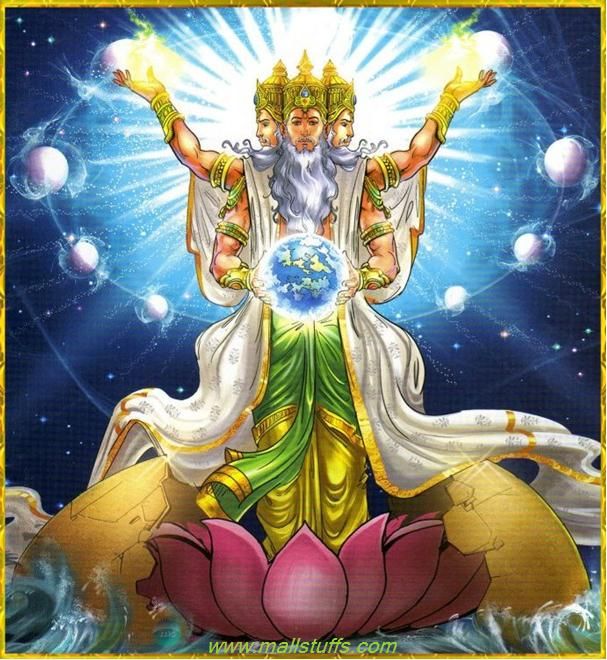
In one day of Brahma there are fourteen Manvantaras and each Manvantara has 8, 51,000 of Deva Years. There are two kalpas on one day-night of Brahma.At the end of the previous Kalpa, Brahma felt fresh from the previous night and found that Prithvi was submerged in water while Bhagavan Varaha Deva entered into water and Prithvi prayed to him; in response, Varahadeva emanated a ‘Ghur Ghur’ sound which was like the reverberation of Sama Veda, lifted up Prithvi from Rasala loka by the might of his horns, Devas rained fragrant flowers from the sky, Rishis went into rapturous tributes to Vishnu’s incarnated Varaha Rupa; and Brahma implored the latter to allow him recommence Srishti with his blessings as also to preserve and administer the Creation that he would so generate even as the Lord gracefully replied to say: ‘Tathastu!’ (So be it!).
Brahma’s first Srishti being Maha Tatva, the creation of Tanmatras was known as Bhuta Sarga or the Second Srishti; Vaikarika or Satvika Ahankara was the third Srishti of Indriyas or Aindriya Sarga; the Fourth Srishti is the Mukyha Sarga related to Mountains, Forests and other Sthaavara Srishti; the fifth Srishti relates to Pashu-Pakshi (Animals and Birds); the seventh Srishti was called Deva sarga or Urthva faced and was of Devas; and Seventh Srishti was of Manava Sarga; the Eighth was of Anugraha Sarga which could be of Satvika or Tamasic nature and finally the Ninth Srishti called the Kaumara Sarga which could be of Prakrita or Vaikrita Marg.
Depending on the carry forward of one’s own balance of ‘Papa-Punya’of the previous time-frame preceding the Pralaya, placement of lives was commenced by Brahma in the New Age. Arising out of his ‘Manasika Samkalpa’ (Mind born Proposal), Brahma created various species including Devas, Asuras, Pitaras and human beings. From his thighs, the evil Asuras emerged and as per his free will various birds were created.
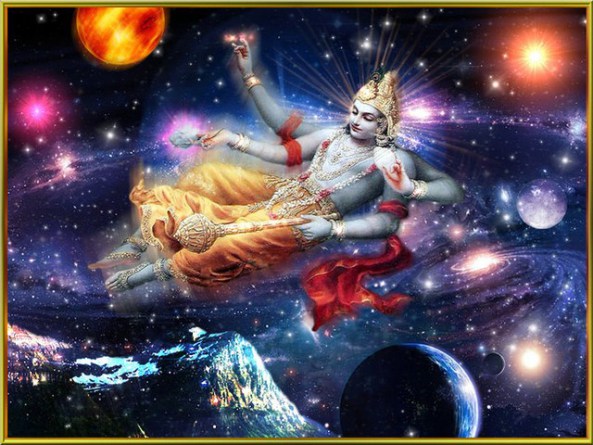
From his stomach surfaced cows, his shoulders the wolves; his face created horses, elephants, asses, nilgais, deer, camels, etc.each species multiplying several others. Brahma’s body hairs created fruits, roots and foodgrains. From his right extreme face, Brahma created, Gayatri Chhandah, Rig Veda, Tivritstoma, Rathantara, Agnihoshtha yagna; from South-faced he created Yajur Veda, Tristhub Chandas, Panchadasha stoma, Brihatsaama, etc; Sama Veda, Jagati Chhanda, Saptadashastoma, ‘Vairupa’ etc; from the Western face; Brahma created Ekavimshatstoma, Atharva Veda, Aptoryama, Anushthup chhanda, and Vairaja from the Uttaravarti Mukha. Miscellaneous ‘Pranis’ were created from any of the limbs of Brahma. To sum up thus at the beginning of the Kalpa, Prajapati Brahma created Devas, Asuras, Pitaras and human beings as also of Yakshas, Pishachas, Gandharvas, Apsaras, Siddhas, Kinnaras, Raakshasaas, Lions, Birds, Animals and Reptiles.
Focussing attention on human beings now, Bhishma asked the highlights of Varnashrama Vidhi and Pulastya Muni explained that Brahma created Brahmanas from the face, Kshatriyas from ‘Vakshasthali’ (chest), Vaishyas from thighs; and Shudras from the feet.These four Varnas are the important constituents of ‘Yagnas’; Devas are satisfied wirh their respective portions of ‘Havis’ (oblations) to Agni and being pleased with the Yagnas, Devas bestow good rains and good crops which leads to material prosperity.
The hearts and hands of every body tend to be clean and social customs and virtuous living would go hand in hand. Prajapati decided the duties of the Four Varnas, depending on the professions that human beings tended to follow like Brahmanas performing Yagnas, Vratas, Temple Tasks, and enabling various religious deeds of Virtue in favour of the members of three other Varnas etc.; Kshatriyas discharging the responsibilities of Kingship, Administration, Security against external enemies, collection of taxes and maintenance of Internal Law and Order; Vaishyas performing business, farming, trading and all matters involving finance, provision of materials to others by allowing reasonable profits for the services given etc. and Shudras supporting the members of the Three Varnas in the discharge of duties being undertaken by them.
Brahma materialised the above various kinds of Creations by applying his mental faculties but was not quite satisfied as the next generations so created were not adequate to fill in the universe; therefore he created Sages like Bhrigu, Pulaha, Kratu, Angira, Marichi, Daksha, Atri and Vasishtha, in addition to the four ‘Manasa Putras’ viz. Sanaka, Sanandana, Sanatana and Sanat Kumaras. As not all these sons were interested in family lives, Brahma created Rudra from his forehead and decided that half of the body be a woman; thus Eleven Rudras got materialised along with as many Rudranis who had a variety of Rupas ranging from ‘Sowmya’ (composure), ‘Krura’(unkindness), ‘Shanta’ (peacefulness), ‘Shyama’ (darkness), ‘Gaura’ (wheatish) and such other colours.
Further on, Brahma created Swayambhu Manu and the latter’s wife Shatarupa; the Manu couple gave birth to sons Priyavrata and Uttanapada and daughters Prasuti (married to Daksha) and Akruti (married to Ruchi Prajapati). To Prasuti and Daksha were born twenty four daughters, thirteen of whom were Shraddha, Lakshmi, Dhruti, Pushti, Tushti, Megha, Kriya, Buddhi, Lajja, Vapu, Shanti, Sidhi, and Kirthi (all these thirteen were married to Dharma); eleven more daughters were Khyati, Sati, Sambhuti, Smriti, Preeti, Kshama, Sannati, Anasuya, Urja, Swaha and Swadha; they were wedded respectively to Bhrigu, Shiva, Marichi, Angira, Pusasthya, Kratu, Atri, Vasishtha, Agni and Pitras.
The sons of Daksha’s daughters were Kamak by Shraddha, Darpa to Lakshmi, Niyam to Dhriti, Santhosh to Tushti, Lobha to Pushti, Shruta to Megha; Danda, Vinay and Naya to Kriya, Bodha to Buddhi, Vinay to Lajja, Vyavasayak to Vapu, Kshema to Shanti, Sukha to Siddhi, and Yash to Kirti.These were all the sons of Dharma. Kaam and Nandi gave birth to Harsha, the grand son of Dharma. Bhrigu and Khyati gave birth to Devi Lakshmi who was Lord Narayana’s wife. Bhagavan Rudra accepted Sati as his wife (Daksha’s daughter) but Devi Sati sacrificed her life pursuant to Daksha’s Yagna to which Rudra was uninvited but Sati insisted in attending it; she felt highly insulted by her father Daksha who also offended Rudra Deva and Rudra eventually destroyed Daksha Yagna. — with Srilan Srisukumaran.
Hinduism
Karma Yoga – Yog Through Selfless Actions
Published
3 years agoon
February 23, 2021By
Vedic Tribe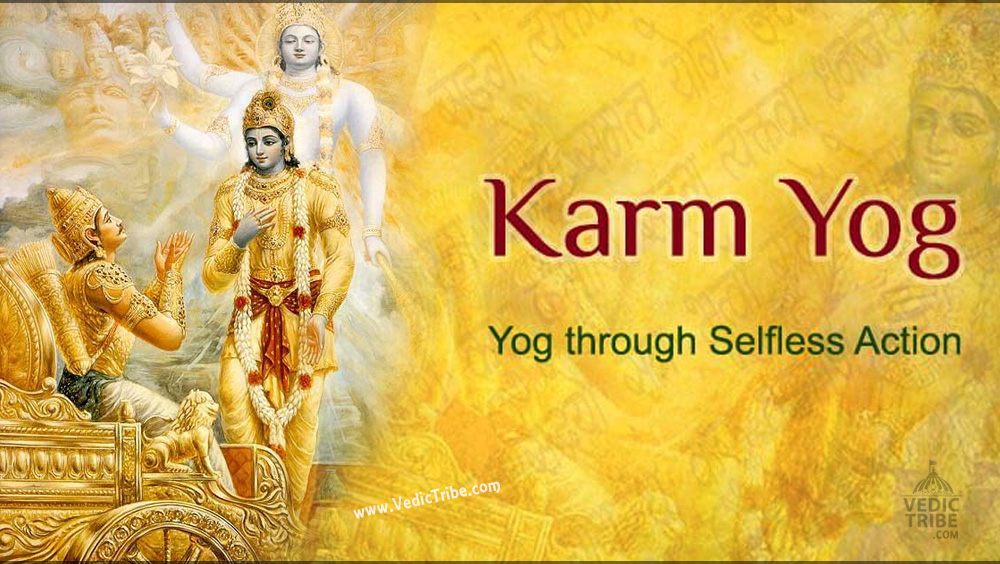
Karma Yoga is Meditation in Action:
“Karma” means action and “yoga” means loving unity of our mind with God. To perform karma and also practice yoga means to remain engaged in activity in the world while remaining in a state of devotional unity with God. This is true spiritual action.
Your bhakti yoga meditation practice will combine all these aspects and it will include:
- Daily sitting meditation
- Daily dynamic meditation woven seamlessly into the fabric of your life’s activities
Before we look at guidelines for these, let’s explore how process is described in the Hindu scriptures.
Karma Yoga of the Bhagavad Gita:
One of the most important scriptures of Hinduism, the Bhagavad Gita, was revealed under unusual circumstances: moments before a war and in the middle of a battlefield. It is comprised of a 700-verse dialogue between Lord Krishna, supreme God, and Arjuna, his loving disciple.
The all-in-one solution of the Bhagavad Gita for eliminating karma is Lord Krishna’s advice to practice akarma or actions that have no karmic consequence.
If we could perfect akarma in daily activity, the consequences of our actions would automatically be neutralized — even though we are engaged in action.
This means that from the point of view of karmic debt, no consequences would be added to our “account”. The only key to this is we must maintain an unbroken and continuous devotion to God.

Karma yoga philosophy in the Bhagavad Gita is summed up in one statement of Lord Krishna:
“Remember Me and fight.”
But is it really possible to simultaneously do devotional remembrance and be engaged in activity? Can the mind function in two places at the same time? This is definitely impossible, but for karma yoga to be done properly, both have to happen simultaneously.
For example, if you are at work and absorbed in a project, and remember God occasionally, how are both these actions accounted for as karmas?
The time you spent in devotional remembrance will be considered devotional action, and the time you spent engrossed in working will be considered normal action. This is not karma yoga.
Plus, a common misconception describes karma yoga as “performing action without being attached to the results”. Although this sounds noble, is it psychologically possible for any human being to do this?
The fact is because we are constantly trying to find authentic happiness, we will always anticipate the outcome of our actions in advance of doing them.
The practical form of the Gita’s karma yoga…
In the Gita, Krishna was both supreme God and Arjuna’s spiritual guide. Krishna advised Arjuna to surrender to Him and to simply follow His instructions. By transferring his motivation for action to a divine personality, Arjuna would not be responsible for the outcome of the actions he was instructed to perform.
For example, a police officer is issued a revolver, which he is instructed to use in the line of duty by his superiors. It could happen that he kills someone in the pursuit of law and order. In the eyes of the justice system, this will not be considered a crime. He did not use his own mental motivation to decide to kill someone — he simply followed the guidelines given to him by his superiors.
In Arjuna’s situation, in spite of engaging in war, all his actions were counted as devotion, because his heart, mind and body were fully dedicated to the will of Krishna.
This again highlights one of the most important points of karma yoga: The mind is the performer of action, not the physical body.
It is our personal motive that has to be carefully redirected for karmic consequences to change or be neutralized.

A Closer Look at the Spiritual Theory
If a practitioner is surrendered to a true divine Guru, and performs actions entrusted to him by his Guru, that activity is considered not only karma yoga, but also bhakti or spiritual action. It will be free of a karmic consequence. That practitioner is not directly attached to the results of that activity because his motive is to follow the instructions of his Guru.
Arjuna accepted Lord Krishn as his Guru at the very beginning of the Gita when he declared he was Lord Krishna’s disciple. He preserved the understanding during the entire Mahabharata War that he was doing service for his Guru.
In this way, just by holding this intention, his devotion remained unbroken and his actions were considered karma yoga. Thus, service to a true Guru is called karma yoga or devotion.
Practically speaking, a Guru will give instructions on how a practitioner can keep his mind engrossed in a state of continuous devotional remembrance. Simply by following these instructions, a disciple is automatically practicing karma yoga.
Those devotional guidelines take the form of (1) karma sanyas and (2) karma yoga.
Karma Sanyas – Quiet Time for Meditation
And old method of dyeing fabric in India was to place a cloth in a dye bath and then allow it to dry in the sun.
After drying, the intensity of the color faded. Again the cloth was placed in a dye bath, again it was placed in the sun, and again the color faded, but the second time more of the color remained.
After entering the dye bath multiple times, the color eventually became intense and fixed.
Similarly, to establish devotion in our hearts and minds, it is important to have a structured daily practice of sitting meditation.
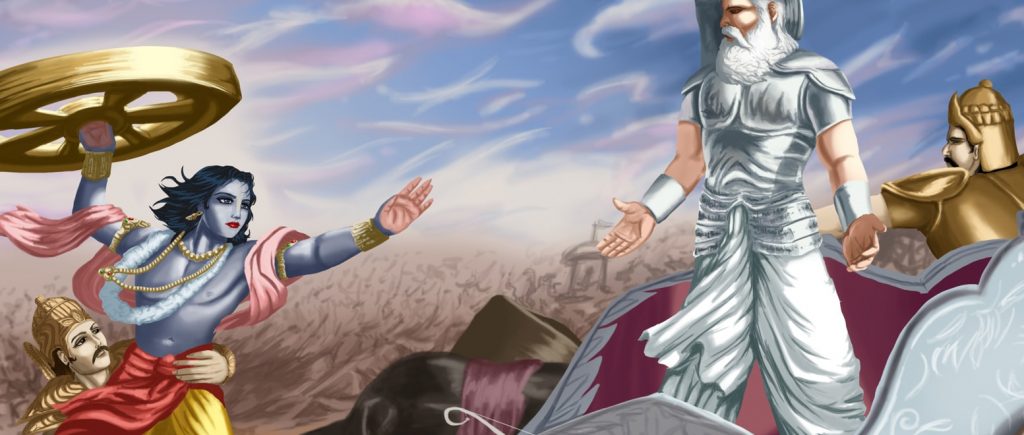
The main elements of a daily devotional practice include:
- Heart-centered prayer
- Kirtan or chanting meditation combined with active visualization
- Aarti-the offering of light – a brief ceremony that reaffirms the spirit of our devotional dedication
Karma Yoga – Dynamic Devotion
For the attainment of divine love, the Vedas state that there is only one rule and one prohibition that apply to bhakti yoga meditation. The rule is: “Always remember Radha Krishna.” The prohibition is, “Never forget Radha Krishna.”
This means that after our sitting meditation, our meditation should continue — while eating, sleeping, walking, working, talking, resting, and so on.
Wherever you are, all the time, whatever you are doing, remember your divine beloved and don’t forget Him! This simultaneous devotion and action is karma yoga. This state of devotional consciousness is cultivated over time with practice.
For example, in the old days street musicians with hand organs kept small monkeys. A monkey by nature is extremely active. How to make a monkey’s nature conform to sitting still, and that, too, in a confined space?

The musician’s technique was to first restrain the monkey with a 100-foot rope. If the monkey tried to go outside of this range, he was stopped. He thought, “Okay, I’ll jump around in a 100-foot area.”
When he was tied with a 50-foot rope he thought, “I went 100 feet yesterday, today I’m restricted to this much.” So he jumped around in a 50-foot area.
When the monkey was finally limited to only 1 foot of rope, he sat quietly, “Why should I drive myself crazy? I’ll just sit here.”
The human mind has this same monkey-like nature. It roams far and wide. Our goal is not to tame it’s active nature, but to train it to roam in a particular area. This is done by gently tying it with the devotional rope of love.
In sitting meditation we cultivate a feeling a devotional relationship with God. In active meditation we can continue this in three ways:
- Embed your intention — Every person has a mission that guides his life’s activities. For example, very few people like to work, but they do it because their mission is to support themselves or their family. While they are at work, although this motive is hidden deep in their mind, it still guides their decisions and actions.Similarly, when we firmly understand the purpose of our life is God-realization, this intention deeply embeds itself in the mind. If cultivated properly, this subconscious devotional intention remains in all our activities, even when we are sleeping.
- Feel divine presence — in sitting meditation we visualize and feel our relationship to God’s personal form. In activity, take hourly breaks for 30 seconds or a minute and with open eyes sense the presence of your worshipped form of God or Radha Krishna. Simply feel you are not alone. Imagine them near or far, sitting, standing or in any position, in any mood of love.
- Share your awareness — After visualizing God’s presence, either feel He is watching you or that you are showing Him what you are doing.
- Avoid wrong association — your associations and environment will affect your feeling of divine connection. Be mindful and avoid those situations that divert your devotional intention.
There is no restriction of time, place and activity for this remembrance. It can be done anywhere, at any time. You do not need to sit in a particular position or have closed eyes. This very simple practice will recall the blissful feelings of your seated meditation and help to stabilize your devotional experience.
Follow us on Facebook
Follow us on Twitter
Latest


Seven Vows and Steps (pheras) of Hindu Wedding explained
Views: 5,530 Indian marriages are well renowned around the world for all the rituals and events forming part of the...


Sari or Saree is symbol of Indian feminism and culture
Views: 4,725 One of the most sensual attires of a woman in India is undoubtedly the sari. It is a...


Atithi Devo Bhava meaning in Hinduism and India
Views: 4,058 Atithi Devo Bhava, an ancient line taken from the Hindu scriptures and was originally coined to depict a visiting person whose...


Sanskrit Is More Than Just A Method To Communicate
Views: 3,290 -By Ojaswita Krishnaa Chaturvedi anskrit is the language of ancient India, the earliest compilation of sound, syllables and...


Significance of Baisakhi / Vaisakhi
Views: 4,325 Baiskhi is also spelled ‘Vaisakhi’, and is a vibrant Festival considered to be an extremely important festival in...


Navaratri: The Nine Divine Nights of Maa Durga!
Views: 5,255 – Shri Gyan Rajhans Navratri or the nine holy days are auspicious days of the lunar calendar according...


History of Vastu Shastra
Views: 7,427 Vastu Shastra (or short just Vastu) is the Indian science of space and architecture and how we may...


Significance of Bilva Leaf – Why is it dear to Lord shiva?
Views: 6,651 – Arun Gopinath Hindus believe that the knowledge of medicinal plants is older than history itself, that it...


Concept of Time and Creation (‘Brahma Srishti’) in Padma Purana
Views: 7,758 Pulastya Maha Muni affirmed to Bhishma that Brahma was Narayana Himself and that in reality he was Eternal....


Karma Yoga – Yog Through Selfless Actions
Views: 7,412 Karma Yoga is Meditation in Action: “Karma” means action and “yoga” means loving unity of our mind with...
Tags
Trending Now
-

 Bhartiya Culture2 years ago
Bhartiya Culture2 years agoSeven Vows and Steps (pheras) of Hindu Wedding explained
-

 Bhartiya Culture2 years ago
Bhartiya Culture2 years agoSari or Saree is symbol of Indian feminism and culture
-

 Bhartiya Culture2 years ago
Bhartiya Culture2 years agoAtithi Devo Bhava meaning in Hinduism and India
-

 Bhartiya Culture2 years ago
Bhartiya Culture2 years agoSanskrit Is More Than Just A Method To Communicate

